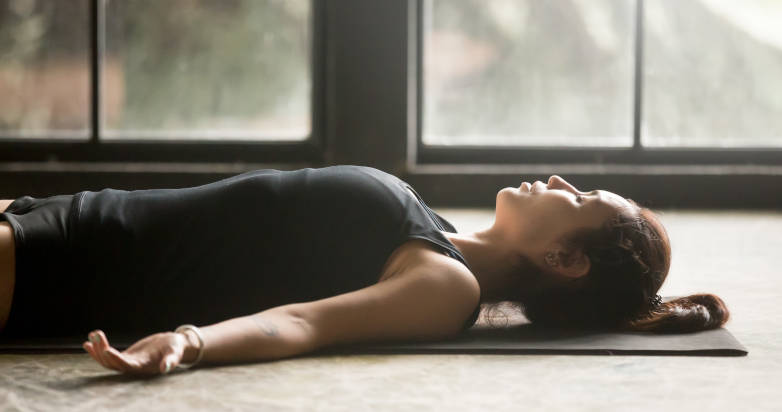Opera singer’s inspiring tips for stronger breathing
Health | 11/5/2021
On 17 November 2021, World COPD Day, with its theme “Healthy lungs – never more important” will aim to help boost global awareness of the condition, to share the latest knowledge about this debilitating disease, and to discuss the various ways that can help to reduce the negative impact of COPD worldwide. Read on to discover how you can train your lungs to breathe stronger in creative ways.
COPD is a lung condition that causes permanent damage to the airways and makes it difficult to breathe. COPD generally occurs in people over the age of 60 and is more likely to impact those people who are currently, or who have previously been smokers, or who have worked extensively with chemicals as part of their careers. However, with a greater understanding of COPD, and with the correct treatment, the disease may be effectively managed. Furthermore, lungs can be taken care of in very creative ways. Did you know that even singing may help ease the symptoms of COPD, improve breathing, and increase lung function?
And who better to offer some unique tips and exercises into how people can train their breathing to help them manage COPD than a classically trained opera singer, and a medical expert in respiratory diseases from Orion.
How to breathe stronger?
Iida Antola is a young opera singer who is currently working on a production of Andrew Lloyd Webber’s musical The Phantom of the Opera at the Finnish National Opera, where she is singing one of the lead roles, Christine Daaé. As an opera singer, breathing training is an essential part of her profession. So, let’s ask a professional who needs strong lungs to give us tips on how to train our breathing!
According to Iida, when considering how to begin making the first step towards managing or training ones breathing, there is a simple and effective technique that can be used.
Says Iida, “At the beginning of voice training, one needs to start training the intercostal muscles, the muscles between the ribs, so that they don’t contract while exhaling. The foundation of this work is posture work, so that the chest remains open, and one does not hunch over. When you have an open posture, breathing happens more effortlessly.”
Iida also explains that breathing training has made her aware of beneficial changes in her body. It has developed her lung capacity, her posture has improved a great deal, and even her back problems have decreased.
Aino Takala, MD, PhD, and medical expert in respiratory diseases from Orion, agrees that breathing training is a good tool to improve both breathing and posture, and it can successfully be put into practice also with COPD patients. “The Global Initiative for Chronic Obstructive Lung Disease (GOLD) 2021 guidelines highlights the role of physical activity as a non-medicinal means to improve the wellbeing of COPD patients, and breathing training as demonstrated here by Iida may be included as one activity to help achieve it.”
These exercises can be performed by anyone
With regards to whether there are certain exercises that could successfully be used by anyone willing to better control their breathing and enhance their lungs, Iida responds in the affirmative.
“I have a couple of exercises that have been the foundations of my breathing technique,” she says. “These exercises focus on building up the intercostal muscles and helping to open the ribcage. One exercise can be done standing up, the other one lying on your side. These would improve anyone’s breathing greatly when done daily. There are also a few breathing exercises that improve one’s exhalation capacity.”
“The first exercise can be done standing up – so pay attention to your posture before starting, make sure that you’re distributing the weight evenly between your two feet, and feel your spine grow upwards. Your chest should feel open and free and your shoulders relaxed,” Iida explains.
1. Expanding the ribcage outwards: Place your hands on your sides in a superhero pose, with your hands on the lowest ribs. Thumb at the front and palms at the back. Make sure your shoulders are relaxed. Direct your breath towards your hands. Since your hands offer some resistance, it’s a powerful image to think that you’re breathing against or towards your hands. Feel your ribcage expand to the sides. Continue for a couple of minutes.
2. Expanding the ribcage upwards: Place your hands on your chest, above the breast and slightly below the collar bone with palms and fingers on the body, so that the tips of the middle fingers meet on the central bone. Once again, direct your breath towards your hands, so that the middle fingers start to come apart. Don’t be discouraged if they don’t come apart at first – that’s completely normal in the beginning. With regular practice the distance between the middle fingers starts to grow, up to 1-2 cm, for example.
3. Expanding the ribcage backwards: Place your hands on your back, slightly higher than your waist. You can anchor your thumbs on your sides, and your palms are flat against your back. When you have found the right position, pay attention to your shoulders, they should relax downwards instead of tensing upwards. Again, breathe against your palms and feel your ribcage expand towards your back. You can vary the position of the hands to whatever feels best for you.
The second exercise should be done lying on the floor:
1. Lie down on one side and place your available (upper) hand on your side / lower ribs, with your thumb towards the back.
2. Imagine, that with only using minimal capacity of your lungs, you start to breathe only towards the area where your hand is. This means that the first breaths you take are not deep but very small and focused. The idea is that with each inhalation, the area where you’re directing your breath expands, like a circle that gets bigger, thus deepening your breath with each inhalation. The longer you spend time doing this exercise, the more openness you start to find in your ribcage.
3. Once you feel like you have opened the entire side of your ribcage with your breath, lie on your back for a while, to feel the difference between the two sides. Move on to the other side.
Commenting on Iida’s breathing exercises, Aino says, “These exercises can be performed by everyone, including COPD patients. As with other components of COPD treatment, this also needs to be done as part of the complete treatment, as judged by the treating physician.”
Finally, asked whether she can impart any positive or uplifting information related to her specialist training and skill set as a professional opera singer, Iida concludes by saying, “The other meaning of the word “inspire” is to breathe in, to inhale. You can approach breathing in a very technical way, but our thoughts and emotions inspire our breathing all the time.”
While it can’t be promised that the breathing tips and techniques discussed in this article will have us all singing ‘Phantom of the Opera’ to a paying audience anytime soon, they can prove to be very beneficial first steps on the way to positively improving self-care for people dealing with COPD.
Nice to know:
Knowledge about COPD has been slowly increasing in recent years, but it remains clear that many people in Europe are largely unfamiliar with the disease. A survey about COPD commissioned by the Finnish pharmaceutical company, Orion Pharma, focused on three European countries, Finland, Germany, and Spain. The aim of the survey was to understand what level of knowledge about COPD existed among the general population across the three countries regarding both the symptoms and the treatment of COPD. According to the results of the survey, there were differing levels of awareness across the three countries. Of note, In Finland, 67% of respondents knew what COPD was, in comparison to 55% in Spain and 50% in Germany. In addition, around 25% of Finns and Germans believed they recognised the symptoms of COPD well. In Spain, the figure was 15%. The best identified symptoms were a chronic cough and shortness of breath. Those surveyed who occasionally or regularly smoked were better able to identify the symptoms than non-smokers in all three countries.
Orion Corporation is a globally operating Finnish pharmaceutical company. We develop, manufacture and market human and veterinary pharmaceuticals and active pharmaceutical ingredients. The dry powder inhaler developed at Orion is in the core of our respiratory therapy area.



